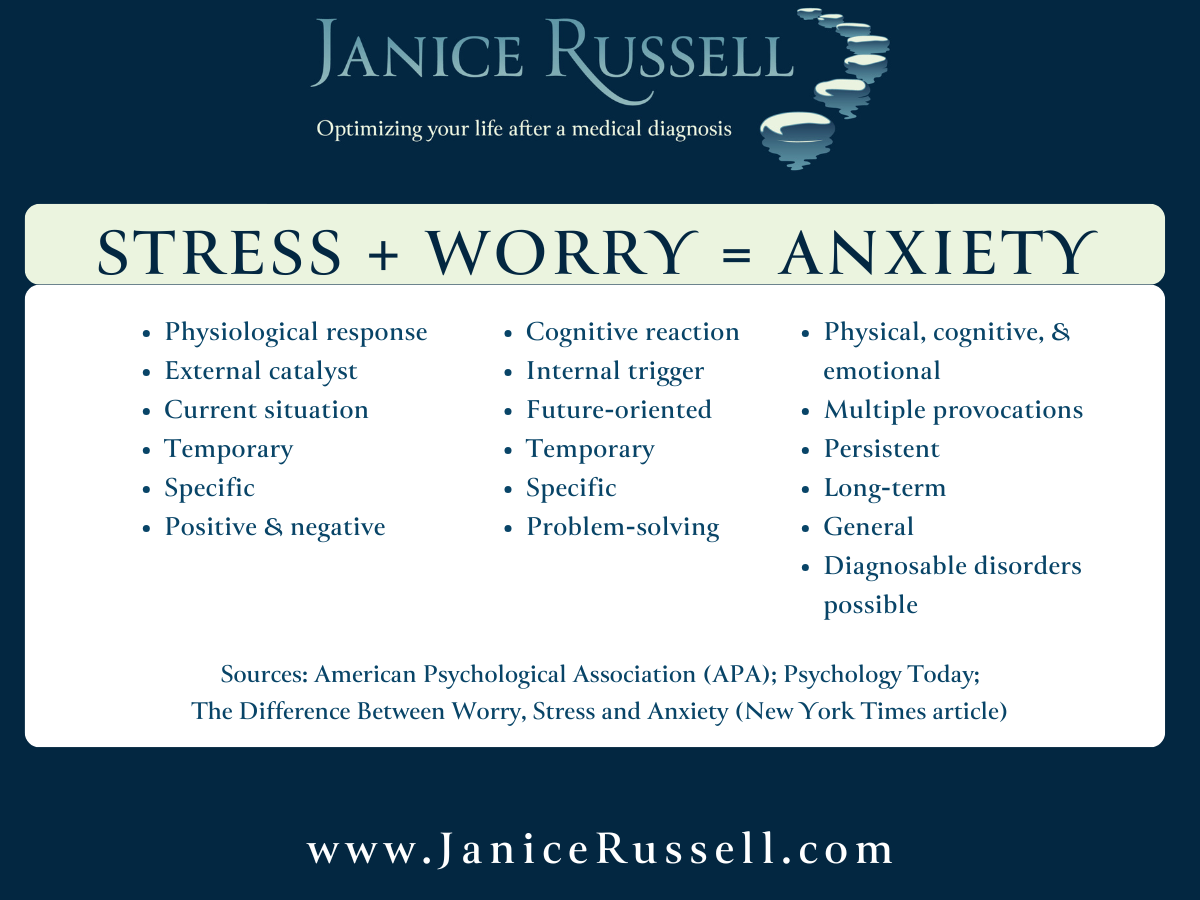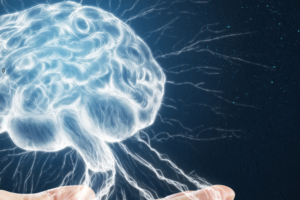
Want To Know The Difference Between Stress, Worry, And Anxiety?
I get stressed! I also have anxiety. And I worry too!
Guess what? While they are related, they aren’t interchangeable. Guess what else? They have some positive components in addition to the well-known negative ones.
You may think that I’m splitting hairs. However, I’ve found that small perspective shifts can make big positive impacts. So let’s unpack this a little.
Stress, worry, and anxiety are three interconnected psychological states that affect adults in various ways, with each having distinct characteristics and impacts on daily life.
Stress is the body’s response to an immediate challenge or threat, which can be physical, mental, or emotional. It’s often associated with external factors like work deadlines, financial pressures, waiting for medical test results, or family responsibilities. The body’s stress response includes the release of hormones such as cortisol and adrenaline, which prepare us to deal with the situation. This can be beneficial in short bursts, helping us to focus and perform under pressure. However, chronic stress can lead to a range of health problems, including cardiovascular disease, weakened immune function, and mental health issues like depression and burnout. Adults experiencing high levels of stress may exhibit symptoms like irritability, fatigue, headaches, and difficulty concentrating.
Worry is a cognitive process involving repetitive thinking about potential future problems. It often focuses on specific events or scenarios, such as health concerns, upcoming work presentations, or financial stability. Unlike stress, which is typically triggered by a current situation, worry is more future-oriented and involves a cycle of negative thoughts that can be difficult to break. Worry can lead to sleep disturbances, reduced productivity, and impaired decision-making. While some level of worry can be motivating and lead to proactive problem-solving, excessive worry can become debilitating and lead to chronic stress.
Anxiety is a more pervasive and persistent condition that involves a general sense of unease or fear, often without a specific cause. It encompasses both the physical symptoms of stress and the cognitive patterns of worry, but is usually more intense and longer-lasting. Anxiety can manifest as generalized anxiety disorder (GAD), social anxiety, panic attacks, or specific phobias. Symptoms of anxiety include rapid heartbeat, sweating, trembling, and feelings of dread. Anxiety can severely impact daily functioning, making it difficult for people to engage in normal activities, maintain relationships, and perform effectively at work. Chronic anxiety can also lead to other mental health disorders, such as depression, and can exacerbate physical health conditions.
These three psychological states may impact adults in different ways. Stress might push a person to meet a deadline, but if the stress persists, it can become overwhelming. Worry can help with planning and preparation, but excessive worry can lead to inaction and avoidance. Anxiety, because it’s more deeply rooted, is often best supported by professional intervention and long-term management strategies.
Stress can be acute or chronic, worry is typically more focused and repetitive, and anxiety tends to be more diffuse and persistent. The physical symptoms of stress and anxiety can overlap, however their triggers and duration differ. Worry doesn’t necessarily involve the physical stress response but can lead to mental and emotional exhaustion. Addressing these psychological states involves different approaches: stress management may involve relaxation techniques and improved time management, while controlling worry might involve cognitive-behavioral strategies to break the cycle of negative thinking. Anxiety often includes a combination of therapy, medication, and lifestyle changes.
Since stress, worry, and anxiety each uniquely impact people, influencing health, productivity, and overall well-being, understanding the differences is crucial for developing effective coping strategies and seeking appropriate support.
As a highly specialized coach, I help clients learn how to successfully cross off to-dos, manage paperwork, and optimize time. If one or more of these areas causes you stress, it may be time to schedule a 30-minute, no-obligation Exploratory Call to see if working together might reduce your overwhelm.


